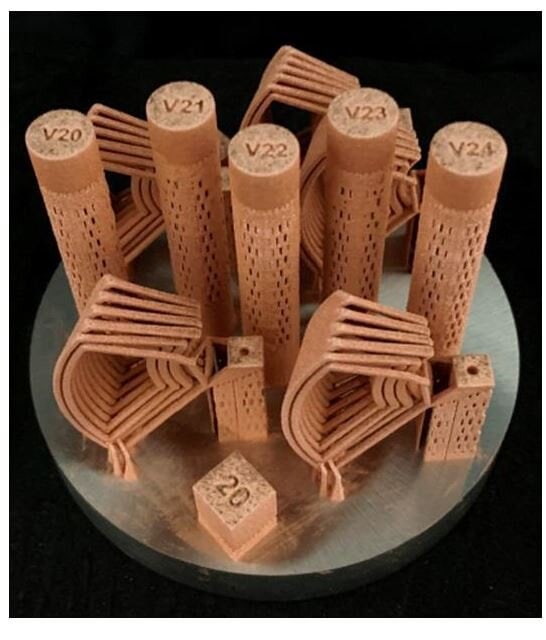Attitude control actuators, electric motors and magnetic bearings all use electromagnetic coils. Conventional coil winding processes are both time-consuming and cost-intensive in small batches, and impose harsh design restrictions in their shape. Recent advancements in additive manufacturing now allow the possibility to manufacture filigree and complex parts using additive manufacturing techniques.

An GSTP funded activity established and verified an end-to-end process for the additive manufacturing of pure copper electromagnetic coils. The activity is a follow-on from the previously conducted GSTP de-risk activity, ‘Additive Manufacturing of Metal Coils (ATOMEC)’, which successfully demonstrated how aluminium coils can be manufactured by laser powder bed fusion (L-PBF). Methods of topology optimisation were effective in reducing the coil mass and increasing the magnetic performance of the coils by efficiently shaping the magnetic field lines.
This new activity combined state-of-the-art approaches in additive manufacturing and material processing; transferred the existing development in aluminium to copper coils and applying the collected know-how to a space application.
The objectives of the activity were to:
- Identify a suitable additive manufacturing process for the processing of pure copper to produce space electromagnetic coils.
- Establish an end-to-end additive manufacturing process, including pre- and post-processing as well as non-destructive testing.
- Demonstrate the suitability of the process to manufacture components with the required material properties by performing material characterization on sample level.
- Produce a demonstrator and test its critical functionalities in a relevant environment to verify that the requirements are met through the process.

Geometric accuracy and electrical conductivity were the main criteria for the evaluation and ultimate selection of the additive manufacturing process. L-PBF with a green laser source was used throughout the activity.
Samples were used to characterise the material’s density, tensile strength, and also functional characteristics, such as thermal and electrical conductivity. High relative density up to 99.99% and electrical conductivity of >98 % IACS was achieved. Prototypes based on the preliminary demonstrator coil design with a reduced number of windings were manufactured and post-processed to test individual process steps, such as support removal and blasting as well as non-destructive inspection. The manufacturing and testing of a demonstrator coil verified its critical functions. Environmental testing (i.e thermal vacuum and thermal cycling) was performed to ensure that the functionalities were not affected by exposure to a relevant environment – they passed those tests without degradation.
The activity successfully demonstrated how the electrical conductivity of pure copper can now be combined with the design freedom of additive manufacturing – both are important factors in the performance of electromagnetic coils – and enable the production of coils with complex shapes to generate dedicated magnetic field shapes.
Creating new geometric shapes for electromagnetic coils are a critical building block in the development of low-vibration magnetic bearings for Earth Observation applications (i.e high resolution imagery or Synthetic-aperture radar) and astrophotography missions.
Subscribe to AM Chronicle Newsletter to stay connected: https://bit.ly/3fBZ1mP
Follow us on LinkedIn: https://bit.ly/3IjhrFq
Visit for more interesting content on additive manufacturing: https://amchronicle.com


